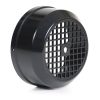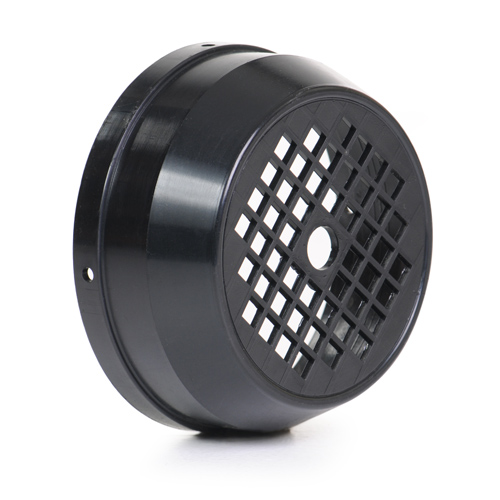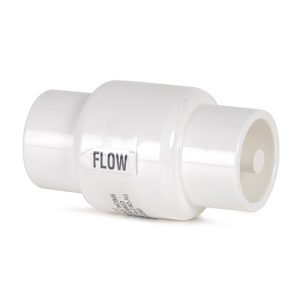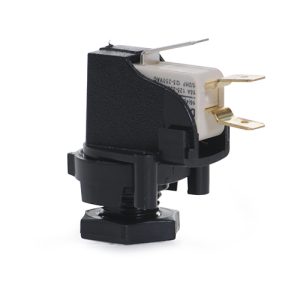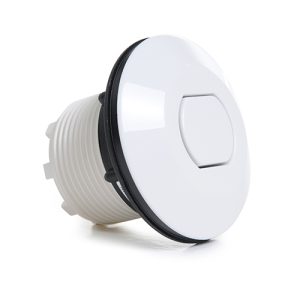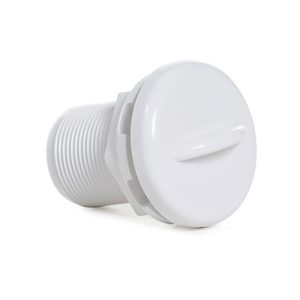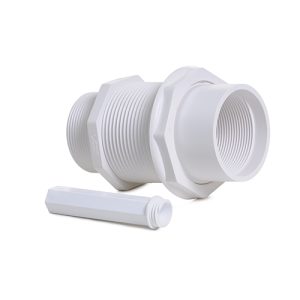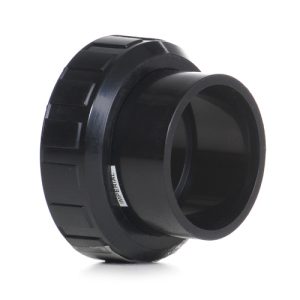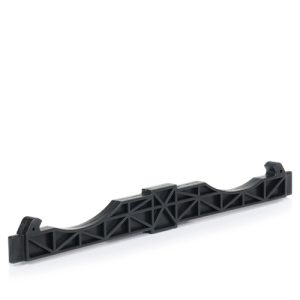Aquamite 0.33hp / 0.50hp Pump Fan Cowl
£30.08 Inc VAT
Out of stock
Want to be notified when this product is back in stock?
Aquamite 0.33hp / 0.50hp Pump Fan Cowl
Essential Motor Cooling and Protection Component
As a retailer of pool and spa parts, I stock this replacement fan cowl for Aquamite 0.33hp and 0.50hp pumps. This protective cover directs airflow through the motor cooling system while safeguarding the fan from debris, ensuring your motor stays cool and operates reliably throughout the swimming season.
What is a Fan Cowl?
A fan cowl (also called a fan cover or motor end cap) is a ventilated cover that fits over the rear of the motor where the cooling fan is located. It features strategically placed vents or slots that allow air to flow through while preventing leaves, insects, small animals, and other debris from entering the motor housing.
The cowl works in conjunction with the motor’s internal cooling fan—a plastic or metal blade assembly mounted on the rear of the motor shaft. As the motor runs, this fan spins at high speed, drawing air through the motor housing to dissipate heat generated by electrical resistance in the motor windings.
Made from durable plastic or composite material, the cowl must withstand outdoor conditions including UV exposure, temperature extremes, and chemical vapours from pool water.
How Motor Cooling Works
Electric motors generate significant heat during operation. Current flowing through the copper windings creates resistance heating, and this heat must be removed to prevent insulation breakdown and motor failure. Excessive heat shortens motor life, reduces efficiency, and can cause thermal overload protection to shut down the motor.
The cooling fan draws air in through ventilation openings, pulls it through channels around the motor windings, and exhausts hot air out the back. This continuous airflow carries heat away from critical components, maintaining safe operating temperatures.
The fan cowl directs this airflow efficiently while keeping the cooling passages clear. Without the cowl, debris can block ventilation openings or jam the fan, reducing cooling effectiveness and potentially causing motor overheating.
Signs Your Fan Cowl Needs Replacement
Visible cracks, breaks, or missing sections in the cowl indicate replacement is needed. Damaged cowls cannot provide adequate protection or direct airflow properly. Even small cracks can allow debris entry that leads to bigger problems.
If the motor runs hot or trips thermal overload protection frequently, insufficient cooling may be the cause. A damaged or missing cowl reduces airflow efficiency, leading to overheating even when the fan itself functions properly.
Debris accumulation inside the motor housing suggests the cowl isn’t providing adequate protection. If you find leaves, insects, or dirt near the fan or in the motor during inspection, the cowl may be damaged or improperly installed.
Unusual motor noises—rattling, buzzing, or scraping—sometimes result from debris that entered through a damaged cowl and interferes with the cooling fan. Foreign objects striking the spinning fan create distinctive sounds that indicate a problem.
Water or moisture inside the motor end can occur if the cowl is cracked or missing. While cowls are ventilated, they prevent direct rain or spray from entering the motor. Visible water damage suggests inadequate protection.
Common Causes of Cowl Damage
UV exposure from direct sunlight gradually degrades plastic, making it brittle and prone to cracking. Pumps installed in full sun without shade age faster, with the cowl often showing the first signs of deterioration through discoloration and brittleness.
Physical impact from dropped tools, lawn equipment, or accidental kicks can crack or break cowls. The rear of the motor is often at shin height, making it vulnerable to contact during yard work or pool maintenance.
Improper removal during motor maintenance can crack mounting tabs or break the cowl body. Using excessive force or prying tools instead of carefully releasing mounting clips causes damage that may not be immediately apparent.
Chemical exposure from spilled pool chemicals or chlorine gas escaping from nearby chemical feeders accelerates plastic degradation. Concentrated chemicals are particularly harsh on plastic components.
Age and weather exposure eventually take their toll. Temperature cycling, moisture, and general environmental exposure cause even well-maintained cowls to deteriorate after several years of service.
Importance of Proper Motor Cooling
Motor windings have temperature limits beyond which insulation breaks down, causing short circuits and motor failure. Adequate cooling keeps temperatures within safe operating ranges, extending motor life from months to years.
Overheating reduces motor efficiency—hot motors draw more current to produce the same output power, wasting electricity. Proper cooling maintains efficient operation, lowering energy costs.
Thermal stress from repeated overheating cycles fatigues motor components. Bearings expand and contract, insulation becomes brittle, and connections loosen. Consistent cooling eliminates this stress and prevents premature wear.
Most motors have thermal overload protection that shuts them down before damage occurs. While this prevents catastrophic failure, repeated thermal shutdowns indicate a cooling problem requiring attention. A functioning fan cowl helps prevent these nuisance shutdowns.
Installation and Mounting
The fan cowl typically secures to the motor housing with screws, clips, or tabs. Proper installation ensures the cowl sits flush against the motor, creating the correct air gap for optimal flow without allowing debris entry.
Ventilation slots must align properly to maximize airflow. The cowl design positions these vents to work with the motor’s internal air passages. Incorrect installation or a wrong cowl design restricts flow and reduces cooling effectiveness.
Ensure mounting hardware is secure but not overtightened. Stripped threads or cracked mounting tabs prevent proper cowl attachment. The cowl must remain firmly in place during operation—vibration from the running motor can loosen improperly secured covers.
Check that the cooling fan isn’t damaged before installing the new cowl. A bent or broken fan won’t move adequate air regardless of cowl condition. While the cowl is removed, inspect the fan and replace it if necessary.
Preventive Maintenance
Inspect the fan cowl during routine pump checks. Look for cracks, particularly around mounting points where stress concentrates. Early detection allows replacement before complete failure.
Clean debris from the cowl exterior and ventilation slots periodically. Leaves, spider webs, and dirt accumulation can restrict airflow even with an intact cowl. A quick brushing or compressed air cleaning maintains proper ventilation.
Listen to your pump during operation. Changes in sound—new rattles, buzzes, or grinding noises—can indicate debris has entered through a damaged cowl. Investigating unusual sounds promptly prevents damage to the cooling fan or motor.
If possible, provide shade for pumps in direct sunlight. A simple pump cover or canopy extends the life of all plastic components including the fan cowl by reducing UV exposure.
After severe weather, inspect the pump and cowl for impact damage. Strong winds can blow debris against the pump, and falling branches can crack plastic components.
Compatibility
This fan cowl is specifically designed for Aquamite 0.33hp and 0.50hp pump motors. The mounting pattern, ventilation design, and dimensions match these motor configurations. Using the correct cowl ensures proper fit, adequate protection, and optimal cooling performance.
These reliable compact pumps are found in numerous residential pool and spa installations, making the fan cowl a regularly needed replacement component.
Product Specifications
| Specification | Details |
|---|---|
| Product Type | Motor Fan Cowl / End Cover |
| Compatibility | Aquamite 0.33hp and 0.50hp pumps |
| Function | Protects cooling fan and directs airflow |
| Material | UV-resistant plastic |
| Application | Mounts on rear of pump motor |
| Ventilation | Strategically positioned vents for optimal airflow |
| Weight | 0.11 kg |
| Dimensions (L × W × H) | 0.13 m × 0.13 m × 0.09 m |
| Volume | 0.002 cubic meters |
| SKU | 6497240571 |
| Category | Pool & Spa Spares |
Best Practices
Replace the fan cowl at the first sign of damage rather than waiting for complete failure. A cracked cowl still provides some protection, but debris entry is only a matter of time. Proactive replacement prevents motor damage from inadequate cooling.
When storing spare parts, keep fan cowls away from direct sunlight and extreme temperatures. Plastic components degrade faster in harsh storage conditions. Keep them in their original packaging until needed.
During motor replacement or major pump service, install a new fan cowl even if the old one appears serviceable. The modest cost is worthwhile insurance when investing in motor replacement or rebuild work.
Document any motor overheating incidents and inspect the fan cowl thoroughly. Repeated overheating suggests cooling system problems that may stem from cowl damage, debris accumulation, or inadequate ventilation.
This protective component ensures your motor receives adequate cooling while guarding against debris-related damage, making it essential for reliable pump operation and extended motor life.
| Weight | 0.11 Kilograms |
|---|---|
| Length | 0.13 Meters |
| Width | 0.13 Meters |
| Height | 0.09 Meters |
| Volume | 0.002 CubicMeters |
| Supplier | GoldenC |
Related products
Spares
Spares

